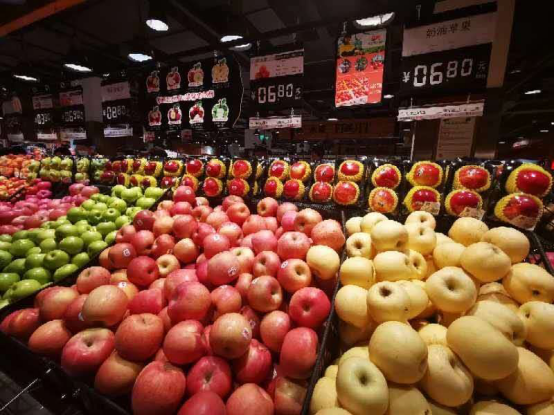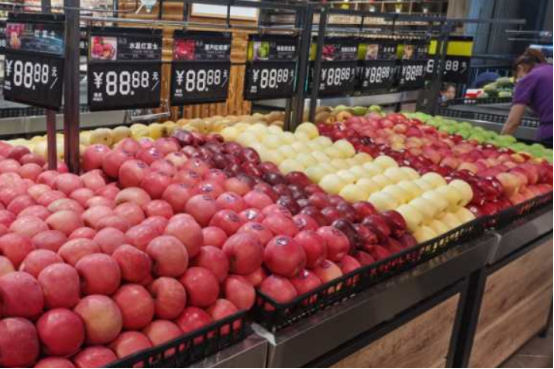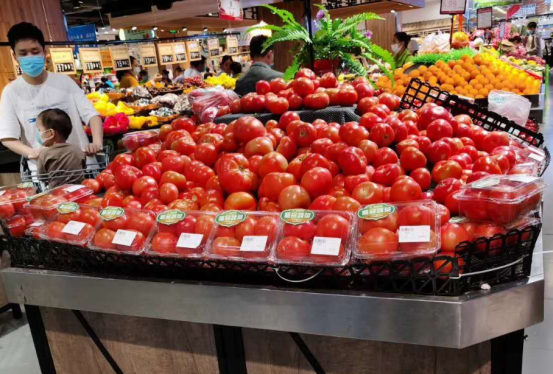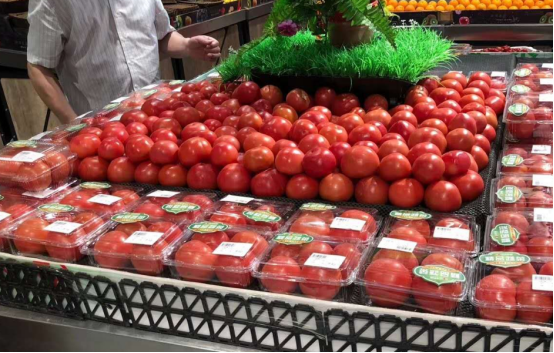I often go to a Yonghui supermarket for shopping, and found that the tally staff in the vegetable and fruit section of this store basically poured whole boxes of tomatoes, apples and other vegetables and fruits on the display table when restocking.
Thinking of the exquisite fruit and vegetable displays seen in many supermarket stores, I was a little surprised at the first time. Such an excellent Yonghui supermarket is so indifferent in the display and replenishment links? The key point is that the customer flow scene of this store is still very popular.
The seemingly simple display seems to have a lot of practical knowledge, and it is not just as simple as the principle of “first-in, first-out, and goods selling piles of mountains”.
The following two sets of photos will specifically discuss what kind of fruit and vegetable display the store should pursue?
The display in Figure 1 is relatively cluttered, but it caters to the customer’s picky and down-to-earth purchasing psychology; it has the advantage of fast replenishment, but at the same time, it will generate large losses; it is more practical during peak sales, especially suitable for supermarket formats that target mass consumption.
Figure 2 shows the apple countertops that are being adjusted before the opening. The display is neat and tidy. Customers will unconsciously handle it with care when purchasing, and the loss is relatively low. During the sales period with fast turnover and large volume, this kind of display affects the purchase. Not very practical; items with high unit price and slow turnover or high-end supermarkets are suitable for such displays.
The tomato display in Figure 3 is relatively cluttered, and the fine packaging on the side is too small, which not only cannot effectively protect the scattered products in the middle, but also easily scratches the products and increases losses when mixed with the scattered products; this kind of messy display must be Goods with fast turnover, otherwise they lose their advantages.
Figure 4 Fine packaging and scattered display are clear and uniform, but the fullness is not enough; if this display combination is adopted, the selling price of fine packaging should be the same as that of loose products, so as to promote sales, or the selection of fine packaging is indeed High-quality products can be marked with higher prices.
The above two styles of display have obvious defects, but it is not easy to judge which one is better and which is worse. Instead, different display methods should be adopted in different sales scenarios.
For example, neat and uniform exquisite display is suitable for single products with high unit price and low turnover. It is mostly used in boutique and high-end delicate supermarkets, which not only has a beautiful image, but also has relatively low loss; simple and rough cluttered display is more suitable for turnover. Large, fast-turnover items are mostly used in the peak sales period of community supermarkets and hypermarkets. Although the loss is relatively high, the efficiency will be higher under high sales performance.
In fact, what style of display the store adopts is mainly determined by the target customer positioning of the store, which is directly related to the turnover and speed of the single product.
If the display of a high-end supermarket is disorganized, it may be closed, or the turnover of goods in this high-end supermarket is too fast, and the high standard of uniformity is too much to take into account, although this is unlikely to happen. If a hypermarket that is positioned for mass consumption, community supermarkets, and other commodities with a large turnover of fruits and vegetables display the feeling of a high-end supermarket, there may be a problem with the customer flow of this store, and the store can only temporarily strengthen the display standards of the store, and the turnover speed will increase. If you don’t go, there must be time for the display of goods.
But it does not mean that the more cluttered the display of a supermarket store, the better the performance of the store. The on-site management of the store, the company’s emphasis on standards and procedures, and the manager’s personal style will all affect the level of on-site display.
The display style does not matter whether it is good or bad, and each has its own suitable scene characteristics. It depends on what effect the store wants to achieve. This is the purpose of our research on the display. According to the purchasing characteristics and main demands of consumers in the business district, we will create an efficient display method that meets their needs.
Post time: Jan-17-2022











